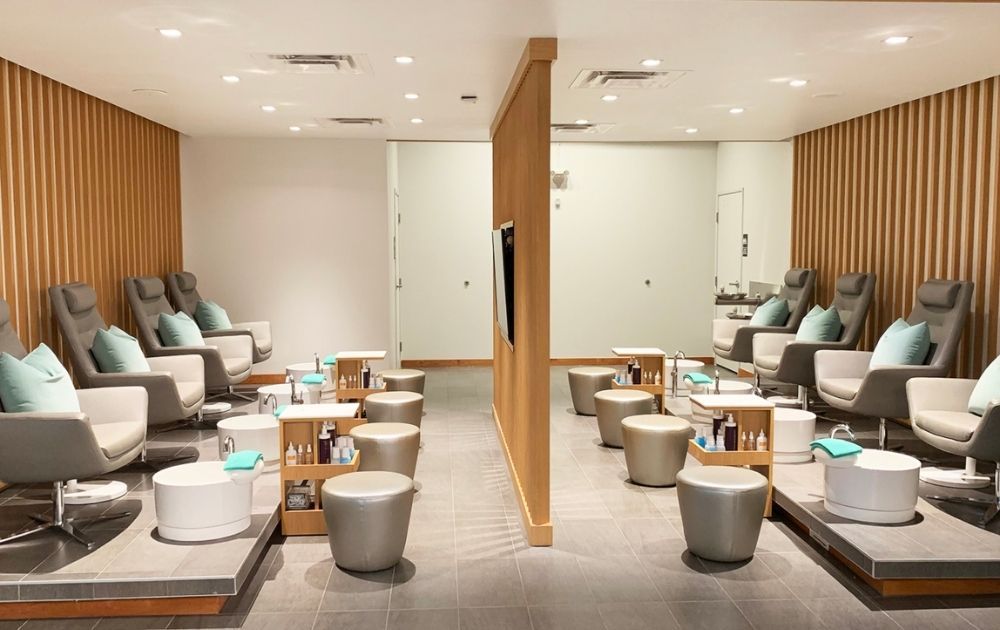The nail industry in the U.S. has been thriving, attracting both local residents and the Vietnamese community. Owning a nail salon not only provides a stable income but also offers long-term business development opportunities. Among the investment options, purchasing an existing nail salon has become a popular choice due to the time and effort saved compared to building one from scratch. However, to ensure success, you need to carefully evaluate several aspects before making a decision. Below are the key factors to keep in mind.

1. Financial health of the salon
Before buying a nail salon, the first step is to analyze its financial status.
1.1 Revenue, profit, and operating costs
Request detailed financial statements for at least the past 12 months. Check whether monthly revenue is consistent, how much profit remains after expenses, and review key costs such as rent, employee salaries, supplies, and utilities.
1.2 Debts and financial obligations
Ensure that the salon has no outstanding debts or financial commitments that could impact you after taking over. This includes unpaid rent, equipment loans, or overdue bills.
1.3 Is the asking price reasonable?
Compare the salon's asking price with others in the area. The price should reflect the salon's true value, including its facilities, existing customer base, and growth potential.

2. Location of the nail salon
Location plays a crucial role in determining a salon’s success.
2.1 Area potential
Consider the potential customer base in the area. A salon located near a densely populated neighborhood, shopping center, or busy area will have an advantage.
2.2 Competition
Evaluate the number of salons operating within a 3-5 mile radius. Too much competition can limit your growth opportunities.
2.3 Accessibility and area conditions
Is the salon easily accessible? Is parking sufficient and convenient? Additionally, consider the safety and overall appearance of the area.

3. Condition of the salon facilities
An existing salon can save you the initial construction costs, but you need to inspect its facilities thoroughly.
3.1 Equipment
Check the condition of equipment such as nail chairs, nail drills, and UV lamps. Do they require repairs or replacements?
3.2 Interior and space layout
Does the interior align with your business style? If renovations are needed, what will the costs be?
3.3 Upgrade and maintenance costs
Set aside a budget for potential upgrades or maintenance. This will help you avoid unexpected expenses after taking over.
4. Current customers and staff
4.1 Regular customers
A salon with a stable customer base is invaluable. Ask the current owner about the number of regular clients, their visit frequency, and their feedback on service quality.
4.2 Staff team
Evaluate the skills and work attitudes of the existing staff. Can you retain them? If staff leave after the takeover, hiring new employees may disrupt the salon's operations.
4.3 Retention strategies
Develop strategies to retain both customers and staff, such as customer care programs and a supportive working environment.
5. Legal and documentation
5.1 Business licenses
Ensure that the salon has all the necessary legal permits, including health and nail service licenses.
5.2 Lease agreement
Review the lease terms carefully. Can you negotiate better conditions?
5.3 Other legal concerns
Check for any ongoing legal disputes involving the salon. This is crucial to avoid risks later.

6. Planning post-acquisition
6.1 SWOT Analysis (Strengths, Weaknesses, Opportunities, Threats)
After acquiring the salon, conduct a comprehensive analysis to understand its status and identity development steps.
6.2 Rebranding or keeping the existing brand
You can retain the current name to leverage its customer base or rebrand to create differentiation.
6.3 Marketing strategies
- Relaunch the salon with attractive promotions.
- Advertise on Facebook and Instagram to attract new customers.
- Use email or SMS marketing to care for existing customers.
Conclusion
Buying an existing nail salon in the U.S. is an excellent opportunity to start your business journey. However, this decision requires careful consideration of various factors, from finances, location, and facilities to legalities and development strategies. Ensure you gather sufficient information and plan thoroughly before making the final decision.



